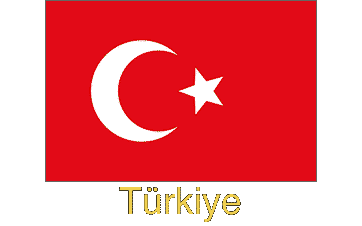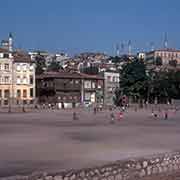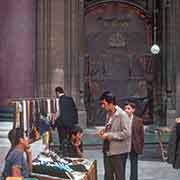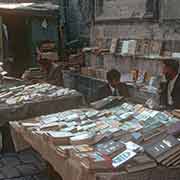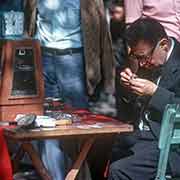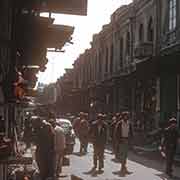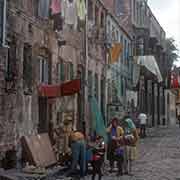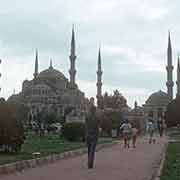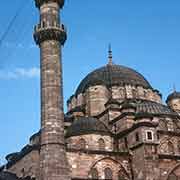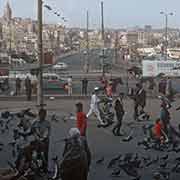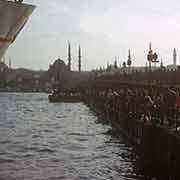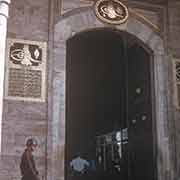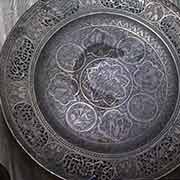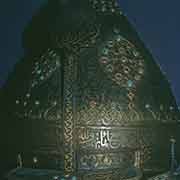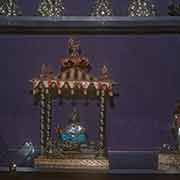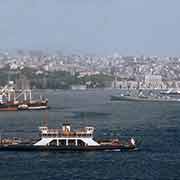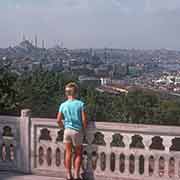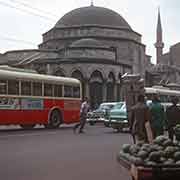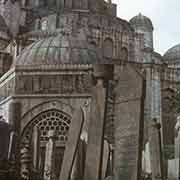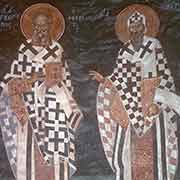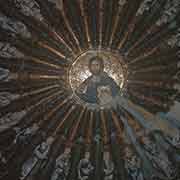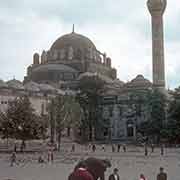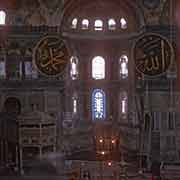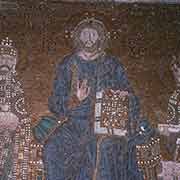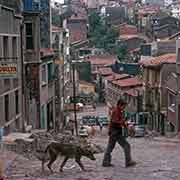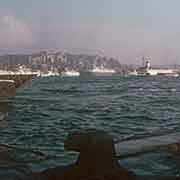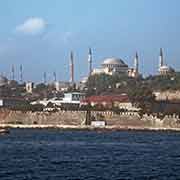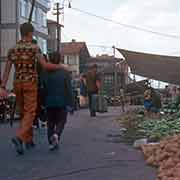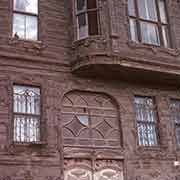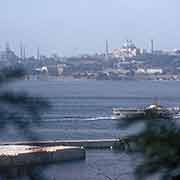Photos of İstanbul, the former Ottoman Capital, Turkey
İstanbul, the former Ottoman Capital
İstanbul is Turkey’s most populous city, with over 15 million people and its economic, historical and cultural centre. It straddles the Bosporus Strait, separating Europe from Asia. Its historical and commercial centre lies on opposite sides of the Golden Horn, in the European part of the city. About one-third of the population lives on the Asian side, in large and densely populated districts.
you may then send it as a postcard if you wish.
Ancient Greek settlers from Megara (near Athens) founded the city, on the peninsula of Sarayburnu, separating the Golden Horn and the Sea of Marmara, around 660 BCE. Neolithic tribes had inhabited this area from about 6600 BCE and between the 13th and 11th Centuries BCE a Thracian settlement, Lygos, was founded here. According to legend, it was named Byzántion after King Byzas, the leader of the Greek colonists. Modern scholars, however, think the name Byzas was of Thracian or Illyrian origin and much older. Byzántion remained a Greek city, with a brief period of Persian rule at the turn of the 5th Century BCE, and gained independence in 355 BCE. In 73 CE Byzantium became part of the Roman Empire, after a long period of having been allied with the Romans.
In the year 324 CE Constantine I had become Emperor and laid out plans to build a new Christian city here, as the eastern capital of the Roman Empire. Although named Nova Roma, it was soon called Constantinople, after its founder. Constantine the Great proclaimed it the capital of the whole Roman Empire in 330, but after his death in 395 the empire was divided, and Constantinople became the capital of the Eastern Roman or Byzantine Empire. It became a centre of Greek culture, and many churches were built. During the reign of Emperor Justinian the Great, who reigned from 527 to 565, the Hagia Sophia was built; it remained the world’s largest cathedral for a thousand years. During most of the Middle Ages, Constantinople was the most extensive and wealthiest city on the European continent and at times the largest in the world.
Its decline began after the reign of Byzantine Emperor Basil II (nicknamed the Bulgar Slayer) in 1025. In 1204 the army of the Fourth Crusade, a Latin Christian armed expedition called by Pope Innocent III to recapture the Muslim-controlled city of Jerusalem, diverted to Constantinople. The Crusaders had entered an agreement with a Byzantine prince, Alexios Angelos, to restore his deposed father, Isaac II, as Emperor. But the Crusaders sacked and pillaged the city, established the Latin Empire of Constantinople and crowned one of them, Baldwin IX, Count of Flanders, as Emperor. They made Hagia Sophia into a Roman Catholic church. The Latin Empire lasted until 1261 when a weakened Byzantine Empire was restored. Constantinople’s population had dwindled, and the city was in disrepair, but after the reconquest in 1261, restoration of some city monuments took place.
On 29 May 1453 Constantinople fell to the Ottoman army, after an eight-week siege; Constantine XI, the last reigning Roman and Byzantine Emperor, died in battle. Sultan Mehmed II (later named Fatih Sultan Mehmet, “The Conquerer”) declared it the new capital. He rode to the Hagia Sophia Cathedral and ordered it to be converted into an imperial mosque because the city had not surrendered peacefully. Declaring himself “Kaysar-i Rûm” (Caesar of Rome) he reorganised the Ottoman state into an empire, the successor and continuation of the Roman Empire. The city was transformed, from a bastion of Christianity into a symbol of Islamic culture, with many ornate mosques, madrasas and hamams, public baths. In 1517 the Ottoman Dynasty claimed the status of a caliphate. Constantinople remained the capital of this last caliphate for over four centuries.
By the end of the 18th Century, the city had a population of 570,000. Bridges across the Golden Horn were constructed, and modern facilities were gradually introduced during the 19th Century. But the Ottoman Empire declined in spite of this and eventually, in 1922, the last Sultan, Mehmed VI, was deposed. On 29 October 1923, the Turkish Republic was proclaimed with Ankara as its capital. No longer a nation’s capital, İstanbul (the name “Constantinople” was no longer accepted) continued to grow. Especially in the 1970s, many people from Anatolia migrated to the city to find employment. It is truly a world city.


